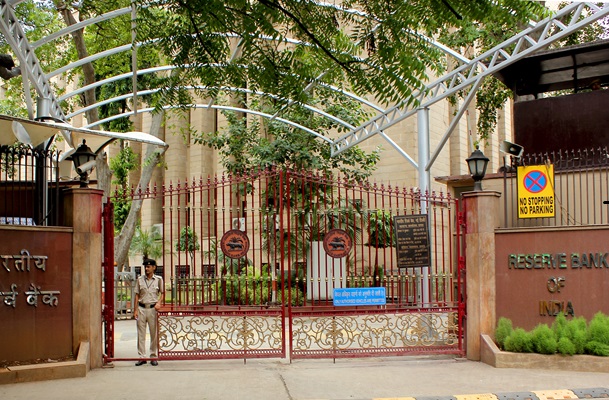.png)

Dhananjay Sinha, CEO and Co-Head of Institutional Equities at Systematix Group, has over 25 years of experience in macroeconomics, strategy, and equity research. A prolific writer, Dhananjay is known for his data-driven views on markets, sectors, and cycles.
March 5, 2025 at 7:05 PM IST
Indian equity markets, until recently swaddled in a cocoon of self-perpetuating narratives, are now confronting a reality check. The narratives that once buoyed investor sentiment—domestic flows overriding foreign outflows, an undeterred growth trajectory, and insulation from global headwinds—have crumbled under the weight of harsh macroeconomic truths.
Since September 2024, market capitalisation has plunged by ₹92 trillion, amounting to 45% of household annual income. The numbers speak for themselves: this is no ordinary correction, it is a reckoning.
Markets continued to defy weak corporate earnings, dismissing early 2024-25 results as temporary blips. By the third quarter, however, the façade collapsed amid sluggish demand and margin compression. Meanwhile, a global cocktail of geopolitical strife, reassessment of US Federal Reserve policy, China’s underwhelming stimulus measures, and a strong US dollar exposed India’s vulnerabilities. The icing on this bitter cake? Donald Trump's return to the White House, fuelling protectionist policies that threaten to upend fragile supply chains and capital flows.
The Domino Effect
The Reserve Bank of India, caught in the crossfire, has scrambled to stabilise the rupee amid acute domestic liquidity shortages. Aggressive intervention such as a hasty 25-basis-point rate cut and a ₹6.8 trillion in liquidity infusions since December 2024—including the latest ₹1.9 trillion open market operation and dollar/rupee buy-sell swap—has done little to restore investor confidence.
Meanwhile, the rupee’s slide toward a record low of 87.9 against the dollar has intensified capital flight. The rate cut, intended to spur growth, inadvertently narrowed the interest rate differential with the US, making Indian assets less appealing. Further capital outflows could accelerate the rupee’s decline to an estimated 90-92 per dollar. Moreover, with the Federal Reserve now hinting at pausing rate cuts, the RBI’s balancing act has become even more precarious.
Despite the RBI’s 25-basis-point cut, India’s 10-year government bond yield has remained elevated at 6.85%. Meanwhile, the US 10-year Treasury yield has softened to 4.2% from January’s peak of 4.80%. This divergence matters. Should US inflation reignite due to tariff-induced supply disruption, prompting the Fed to reverse its policy, the narrowing rate spread could accelerate FPI exits.
Growth Paradox
Despite the official narrative of a strong economy, the pressure for continued monetary easing tells a different story. Markets no longer buy the growth story, recognising the cracks beneath the surface: a) spillover effect from global protectionism, b) uncertainty impacting corporate capital expenditure, revenue growth and employee compensation, c) stagnant household income, exacerbated by declining asset values and tightening credit conditions, d) the banking system’s struggle with lagging deposit growth, and e) the fiscal consolidation drive constraining government stimulus measures.
While income tax cuts and RBI’s liquidity measures offer a temporary cushion, their impact is likely to be muted against these broader challenges. Fiscal consolidation, though prudent, has shackled the government’s ability to stimulate demand. A pivot from capital expenditure to revenue spending may offer short-term relief, but it’s merely a band-aid on a bullet wound.
At the same time, Trump’s second act is unfolding as feared—a maximalist playbook of tariffs and trade barriers. For India, the implications are twofold: reciprocal tariffs on exports and a surge of Chinese dumping distorting local markets. The impulses of protectionism could be more enduring than the positive spillovers from a potential Russia-Ukraine ceasefire.
Cheap Or Trapped?
Indian equities are cheaper, but not cheap. The Nifty 50’s trailing P/E of 19.6x sits below its 19-year average of 22x, yet remains frothy compared to emerging market peers. Smallcaps, despite plummeting from 36x to 25x, still trade at a 29% premium to largecaps. Based on composite rankings, Sensex and Nifty 50 now stand at 13th and 15th, respectively, among 25 key global indices. However, with projected forward earnings growth of 11%, there is a risk of further de-rating.
Domestic flows, once hailed as the market’s saviour, are now a double-edged sword. FPI outflows have surpassed ₹2.3 trillion over the past six months. While equity mutual fund inflows remained robust through December, averaging ₹400 billion per month, cracks are beginning to show. Net systematic investment plan additions have declined by 83%, and SIP discontinuations have surged by 56%.
Thematic funds—particularly infrastructure, power, public sector undertakings, and manufacturing—dominated 40% of inflows from April 2024 to January 2025. Largecap funds, attracting a mere 5% of flows, may prove resilient, but the broader retail retreat is ominous. History shows retail investors often flee at the bottom—a capitulation that could deepen losses.
No Easy Fixes
Near-term sentiment revival does not obviate the eventual capitulation. Policymakers face a massive task. Rate cuts and liquidity injections cannot resurrect growth in a world of fractured trade.
For investors, prudence is paramount. Largecaps, with their relative stability and institutional backing, remain the safer bet. Smallcaps, still bloated by speculative fervour, are best avoided. This is neither 2008 nor 2020. India’s current crisis is subtler. The markets may yet bounce, but until growth narratives align with reality, volatility will be the new normal. In a world where Presidents tweet and central banks scramble, certainty is a fantasy.




